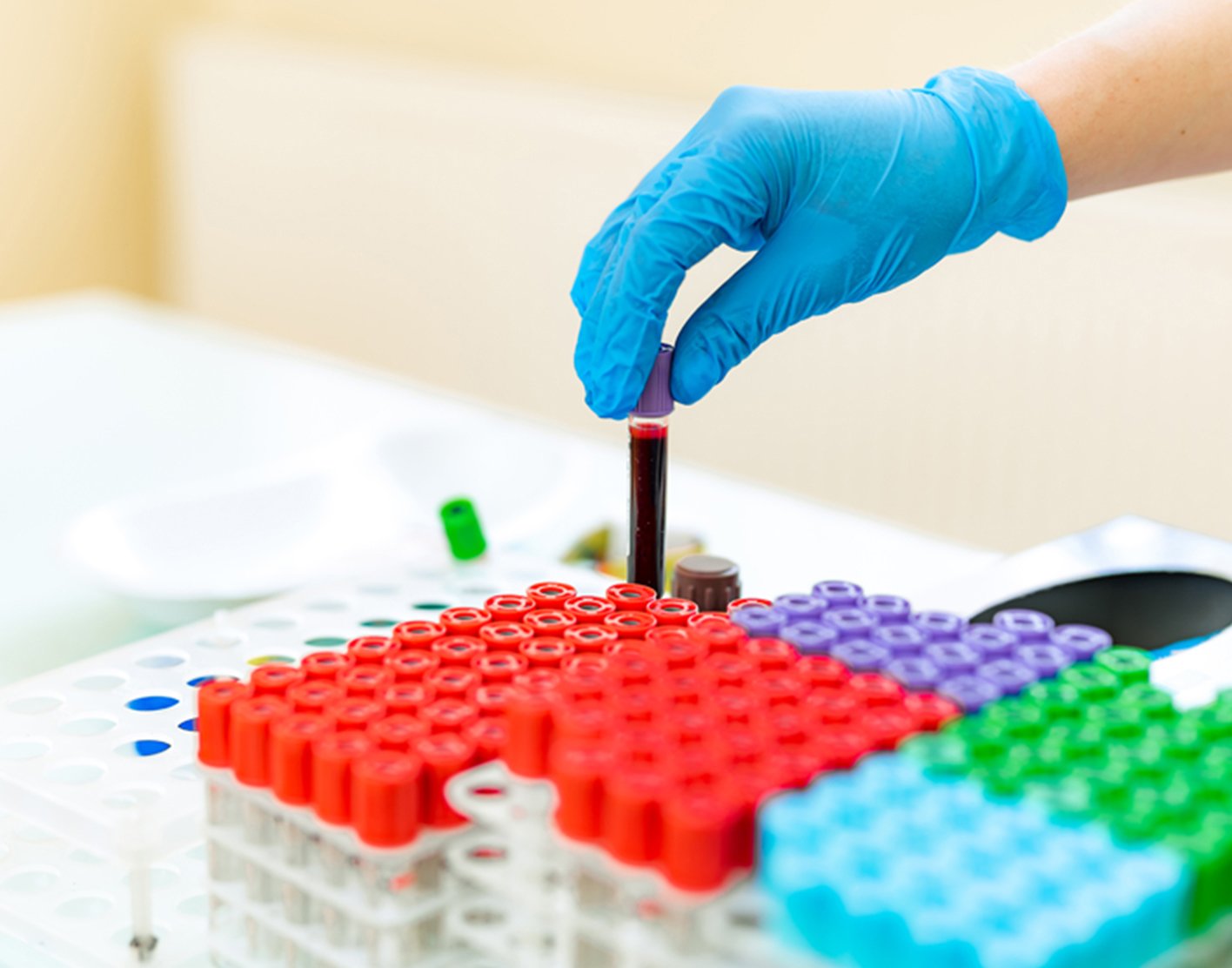
Calcium blood test
Definition
The calcium blood test measures the level of calcium in the blood.
This article discusses the test to measure the total amount of calcium in your blood. About one half of the calcium in the blood is attached to proteins, mainly albumin.
A separate test that measures calcium that is not attached to proteins in your blood is sometimes performed. Such calcium is called free or
Calcium can also be measured in the
Alternative Names
Ca+2; Serum calcium; Ca++; Hyperparathyroidism - calcium level; Osteoporosis - calcium level; Hypercalcemia - calcium level; Hypocalcemia - calcium level
How the Test is Performed
A
How to Prepare for the Test
Your health care provider may tell you to temporarily stop taking certain medicines that can affect the test. These medicines may include:
- Calcium salts (may be found in nutritional supplements or antacids)
- Lithium
- Thiazide diuretics (water pills)
- Levothyroxine
- Vitamin D
Drinking too much milk (2 or more quarts or 2 liters a day or a large amount of other dairy products) or taking too much vitamin D as a dietary supplement can also increase blood calcium levels.
How the Test will Feel
When the needle is inserted to draw blood, some people feel moderate pain. Others feel only a prick or stinging. Afterward, there may be some throbbing or slight bruising. This soon goes away.
Why the Test is Performed
All cells need calcium in order to work. Calcium helps build strong bones and teeth. It is important for heart function, and helps with muscle contraction, nerve signaling, and blood clotting.
Your provider may order this test if you have signs or symptoms of:
- Certain bone diseases
- Certain cancers, such as multiple myeloma, or a cancer of the breast, lung, neck, and kidney
Chronic kidney disease Chronic liver disease - Disorders of the parathyroid glands (hormone made by these glands controls calcium and vitamin D levels in the blood)
- Disorders that affect how your intestines absorb nutrients (intestinal malabsorption)
- High vitamin D blood level
- Overactive thyroid gland (hyperthyroidism) or taking too much thyroid hormone medicine
Your provider may also order this test if you have been on bed rest for a long time.
Normal Results
Normal values range from 8.5 to 10.2 mg/dL (0.47 to 0.57 millimol/L).
Normal value ranges may vary slightly among different laboratories. Some laboratories use different measurements or may test different specimens. Talk to your provider about the meaning of your specific test results.
What Abnormal Results Mean
A higher than normal level may be due to a number of health conditions. Common causes include:
- Being on bed rest for a long time.
- Consuming too much calcium or vitamin D.
Hyperparathyroidism (parathyroid glands make too much of their hormone; sometimes associated with a low vitamin D level).- Infections that cause granulomas such as tuberculosis and certain fungal and mycobacterial infections.
Multiple myeloma , T cell lymphoma and certain other cancers.Metastatic bone tumor (bone cancer that has spread).- Overactive thyroid gland (hyperthyroidism) or too much thyroid hormone replacement medicine.
Paget disease . Abnormal bone destruction and regrowth, causing deformity of the affected bones.Sarcoidosis . Lymph nodes, lungs, liver, eyes, skin, or other tissues become swollen or inflamed.- Tumors producing a parathyroid hormone-like substance.
- Use of certain medicines such as lithium, tamoxifen, and thiazides.
A lower than normal levels may be due to:
- Disorders that affect absorption of nutrients from the intestines (intestinal malabsorption)
Hypoparathyroidism (parathyroid glands do not make enough of their hormone)- Kidney insufficiency or failure
- Low blood level of albumin
- Liver disease
- Magnesium deficiency
- Pancreatitis
- Vitamin D deficiency
Risks
There is very little risk involved with having your blood taken. Veins and arteries vary in size from one person to another and from one side of the body to the other. Taking blood from some people may be more difficult than from others.
Other risks associated with having blood drawn are slight but may include:
- Excessive bleeding
- Fainting or feeling lightheaded
- Hematoma (blood accumulating under the skin)
- Infection (a slight risk any time the skin is broken)
- Multiple punctures to locate veins
References
Chonchol M, Smogorzewski MJ, Stubbs JR, Yu ASL. Disorders of calcium, magnesium, and phosphate balance. In: Yu ASL, Chertow GM, Luyckx VA, Marsden PA, Skorecki K, Taal MW, eds. Brenner and Rector's The Kidney. 11th ed. Philadelphia, PA: Elsevier; 2020:chap 18.
Klemm KM, Klein MJ, Zhang Y. Biochemical markers of bone metabolism. In: McPherson RA, Pincus MR, eds. Henry's Clinical Diagnosis and Management by Laboratory Methods. 24th ed. Philadelphia, PA: Elsevier; 2022:chap 16.
Review Date: 19/11/2023
The information provided herein should not be used during any medical emergency or for the diagnosis or treatment of any medical condition. A licensed physician should be consulted for diagnosis and treatment of any and all medical conditions. Call 911 for all medical emergencies. Links to other sites are provided for information only -- they do not constitute endorsements of those other sites. Copyright ©2019 A.D.A.M., Inc., as modified by University of California San Francisco. Any duplication or distribution of the information contained herein is strictly prohibited.
Information developed by A.D.A.M., Inc. regarding tests and test results may not directly correspond with information provided by UCSF Health. Please discuss with your doctor any questions or concerns you may have.



























